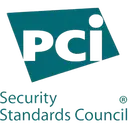For most organizations, audits are treated like a finish line. You prep, survive the chaos, hand over your evidence, and then you move on.
But in the rush to wrap things up, many teams miss the final and arguably most important phase: learning from your most recent audit cycle and making improvements for the next one.
That’s the value of the audit feedback loop: a structured process for gathering auditor feedback that can be analyzed and acted on.
Feedback loops transform audits from reactive checklists into strategic growth tools that benefit your organization’s security and compliance efforts. When implemented effectively, these loops can make your next audit smoother while creating lasting operational efficiencies that benefit your entire organization.
Modern audit management platforms like Thoropass help organizations set up the audit workflows needed to enable these feedback opportunities. Read on to learn more about the value of feedback loops and how they address the disconnects dragging down your audit process.
Feedback loops: The solution your audit process needs
At Thoropass, an audit feedback loop is our term to describe the communication cycles that happen during and after an audit. These loops capture key learnings—both from successful interactions and pain points—that can then guide future improvements to your auditing and compliance processes.
“We actually track the number of loops in every engagement.” Joe Hunsicker, Sales Solutions Engineer at Thoropass, explains. “Some of those are necessary—clarifications, additional context, etc.—but others are inefficient. They happen because something wasn’t scoped clearly or the right context wasn’t communicated.”
The ultimate goal, according to Hunsicker, is to “reduce the number of unnecessary loops—while encouraging the valuable ones that make your program stronger.”
To illustrate the difference, here’s how traditional audits compare to feedback loop-enhanced processes:
Traditional Audit Workflow:
- Auditor requests evidence
- Organization provides documentation
- Auditor identifies gaps or issues
- Organization scrambles to address findings
- Audit concludes with report delivery
- Organization files away the report until next year
Feedback Loop-Enhanced Workflow:
- Auditor requests evidence with clear context
- Organization provides documentation through centralized platform
- Real-time clarification and quality discussions occur
- Issues are addressed collaboratively with an understanding of the business context
- Audit concludes with strategic recommendations
- Post-audit analysis identifies process improvements for future cycles
These loops occur at multiple stages: during evidence collection when clarification is needed, during testing when controls require deeper explanation, and—crucially—after audit completion when strategic insights can be captured and applied. The most overlooked feedback is often uncovered in this final phase, informing strategic recommendations for process improvements that go beyond compliance requirements to guide operational efficiencies and security enhancements.
Without feedback loops, organizations often find themselves caught in cycles of miscommunication, last-minute scrambling, unnecessary rework, and repeated mistakes across audit cycles. But with structured feedback mechanisms in place, audits become collaborative partnerships where both parties—auditors and the organizations they collaborate with—work toward the shared goal of improving the organization’s security posture.
The value of a feedback loop in the audit process
When organizations implement structured feedback loops in their audit processes, they create a cycle of continuous improvement that delivers tangible value across four key areas: time optimization, operational clarity, communication, and process improvement.
1. Reallocating time back to the business
By eliminating redundant communications and streamlining evidence collection through clearer upfront context, feedback loops reduce the back-and-forth that typically consumes audit cycles.
“Organizations have more time to focus on the things that are pressing to their business,” Hunsicker notes. “They can get their reports faster, spending less time on compliance and audit, and more time on security and whatever business they’re building.”
By reducing time spent navigating audit confusion, compliance teams can shift focus from reactive firefighting to proactive security improvements.
2. Better internal organization and clarity
“Feedback loops can create less internal strife because they establish a structured process for communicating effectively between the auditor and across teams,” Hunsicker explains.
Instead of scrambling to understand requirements and locate evidence, teams operate with consistent processes and clear communication channels. The result is reduced stress, better preparation, and more meaningful engagement with the audit process.
3. Better communication with your auditor
Modern audit platforms facilitate feedback loops by creating repeatable workflow processes that improve communication between the auditor and the business.
Better communication makes it easier for auditors and their businesses to build a more productive partnership over time. Feedback loops turn two-way communication into a fixture of the auditing process, using a finite number of communication touchpoints to ensure ongoing feedback through a structured system that doesn’t risk overwhelming or confusing your auditor.
4. An audit trail of feedback for future analysis and improvement
By building feedback loops into your auditing workflows, your organization benefits from embedded, repeatable processes that are designed to support ongoing analysis and improvement.
This transparency eliminates the email chains, assorted spreadsheets, and document version confusion that plague traditional audits. More importantly, it creates an audit trail of feedback that can be analyzed and improved upon for future cycles.
Feedback loops also change how teams relate to their auditors. Instead of being subject to a one-sided evaluation, audits become more of a collaborative partnership.
“Feedback is good,” Hunsicker says. “It’s what people want from an audit relationship. They want someone knowledgeable who can challenge their assumptions and act like an advisor instead of someone just checking boxes.”
The components of an impactful feedback loop
A strong audit feedback loop doesn’t happen by accident. It’s built from clear roles, intentional communication, and a shared commitment to improvement.
Here are the components every audit feedback loop needs to feature:
1. Value-added questioning
The most impactful feedback goes beyond basic compliance checking to explore the why behind controls and processes: “A value-add comment like, ‘Can you clarify what you meant by X?’ shows that folks are looking to improve,” Hunsicker explains. “It’s all about giving feedback on things that don’t appear quite right to help propel the audit process and business forward.”
This approach transforms audits from checkbox exercises into strategic consultations. When auditors ask, “This control operates flawlessly, but why are you doing this?” they’re creating opportunities for organizations to evaluate whether security investments align with actual business needs and risk profiles.
The key is framing questions through a helpful lens rather than a punitive one. “Those value-added loops occur when a third party independently evaluates a system and produces a conversation that otherwise might not have taken place,” notes Hunsicker. These conversations often reveal opportunities for simplification, automation, or strategic realignment that internal teams might miss.
2. Strategic partnership approach
Successful feedback loops require both parties to view the relationship as a partnership rather than an adversarial evaluation. “Feedback loops go beyond just checking the box: Did you do this or that?” Hunsicker says. “That yes/no appraisal is not the focus of an audit process.”
This partnership mentality encourages open communication about challenges, constraints, and objectives. When organizations feel comfortable discussing why certain controls exist (“it’s a contractual requirement”) or what business pressures they face, auditors can provide more relevant and actionable feedback.
3. Defined roles and responsibilities
Clear role definition ensures feedback loops remain productive rather than overwhelming. “It’s about clarifying the relationship and roles between the auditor and auditee,” Hunsicker explains. “There’s a team of auditors, generally a lead auditor—in our case, we call it an audit delivery manager—that would be responsible for feedback.”
Organizations should designate specific team members to participate in feedback discussions, ensuring consistency and preventing communication overload. These designated contacts serve as translation layers between technical audit requirements and business operations, facilitating more meaningful exchanges.
4. Focus on quality over quantity
Not all feedback is valuable feedback. The most effective feedback loops limit the number of touchpoints to prioritize quality communication over high-volume feedback that can muddle messaging and overwhelm recipients.
“We want to paint the picture that we’re here to understand so that we can have more meaningful interactions and more meaningful feedback loops—as opposed to the unnecessary ones that kind of plague our industry,” Hunsicker notes.
This quality focus requires both auditors and organizations to prepare thoroughly, communicate clearly, and engage substantively. The goal is reducing total communication volume while increasing the strategic value of each interaction.
Close the gap between audit and process improvement
By capturing the right insights and embedding them into your processes, feedback loops turn each audit into an opportunity to strengthen your team’s knowledge, systems, and collaboration. You can reduce repeat mistakes, surface strategic conversations, and prepare for future audit frameworks with confidence, not dread.
Thoropass enables this shift. With tools to facilitate real-time communication, identify framework overlap, and track meaningful touchpoints across audits, our platform turns feedback from an afterthought into an engine for value-added auditing and continuous compliance.
Ready to modernize your audit process? Schedule a discovery session with Thoropass.

Related Posts
Stay connected
Subscribe to receive new blog articles and updates from Thoropass in your inbox.
Want to join our team?
Help Thoropass ensure that compliance never gets in the way of innovation.













.png)